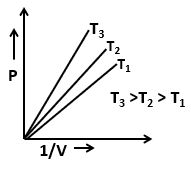Given is a reaction for your reference:

The final product [C] is:
1.

2.

3.

4.





Subtopic: Aldehydes & Ketones: Preparation & Properties | Carboxylic Acids: Preparation & Properties |
61%
From NCERT
NEET - 2023
Please attempt this question first.
Hints
Please attempt this question first.
Select the correct statements from the following:
Choose the correct answer from the option given below:
| A: | Atoms of all elements are composed of two fundamental particles. |
| B: | The mass of the electron is \(9.10939 \times 10^{-31} \mathrm{~kg} \text {. }\). |
| C: | All the isotopes of a given element show same chemical properties. |
| D: | Protons and electrons are collectively known as nucleons. |
| E: | Dalton's atomic theory regarded the atom as an ultimate particle of matter. |
| 1. | B, C and E only | 2. | A, B and C only |
| 3. | C, D and E only | 4. | A and E only |
Subtopic: Introduction |
71%
From NCERT
NEET - 2023
Please attempt this question first.
Hints
Please attempt this question first.
The stability of Cu2+ is greater than that of Cu+ salts in an aqueous solution due to:
1. Second ionisation enthalpy
2. First ionisation enthalpy
3. Enthalpy of atomization
4. Hydration energy
1. Second ionisation enthalpy
2. First ionisation enthalpy
3. Enthalpy of atomization
4. Hydration energy
Subtopic: d-Block Elements- Properties & Uses |
70%
From NCERT
NEET - 2023
Please attempt this question first.
Hints
Please attempt this question first.
The relation between \(n_m \) (\(n_m \) = number of permissible values of magnetic quantum number (ml) for a given value of azimuthal quantum number (l) is:
1. \(n_m = l+2\)
2. \(l = {n_m -1 \over 2}\)
3. \(l= 2n_m +1\)
4. \(n_m = 2l^2 + 1 \)
1. \(n_m = l+2\)
2. \(l = {n_m -1 \over 2}\)
3. \(l= 2n_m +1\)
4. \(n_m = 2l^2 + 1 \)
Subtopic: Shell & Subshell |
67%
From NCERT
NEET - 2023
Please attempt this question first.
Hints
Please attempt this question first.
Intermolecular forces are forces of attraction and repulsion between interacting particles that will be:
Choose the most appropriate answer from the options given below:
1. A, C, D, E are correct
2. B, C, D, E are correct
3. A, B, C, D, E are correct
4. A, B, C, E are correct
| A. | dipole - dipole forces |
| B. | dipole-induced dipole forces |
| C. | hydrogen bonding |
| D. | covalent bonding |
| E. | dispersion forces |
1. A, C, D, E are correct
2. B, C, D, E are correct
3. A, B, C, D, E are correct
4. A, B, C, E are correct
Subtopic: Introduction to States of Matter |
From NCERT
NEET - 2023
Please attempt this question first.
Hints
Please attempt this question first.
Homoleptic complex from the following complexes is:
1. Triamminetriaquachromium (III)
2. Potassium trioxalatoaluminate (III)
3. Diamminechloridonitrito-N-platinum (II)
4. Pentaamminecarbonatocobalt (III) chloride
1. Triamminetriaquachromium (III)
2. Potassium trioxalatoaluminate (III)
3. Diamminechloridonitrito-N-platinum (II)
4. Pentaamminecarbonatocobalt (III) chloride
Subtopic: Introduction, Classification and Nomenclature |
77%
From NCERT
NEET - 2023
Please attempt this question first.
Hints
Please attempt this question first.
Among the given reactions, which one does not result in the formation of a primary amine as the product?
| 1. |  |
| 2. |  |
| 3. |  |
| 4. |  |
Subtopic: Amines - Preparation & Properties |
71%
From NCERT
NEET - 2023
Please attempt this question first.
Hints
Please attempt this question first.
Which one of the following statements is correct?
| 1. | Mg plays role in neuromuscular function and interneuronal transmission. |
| 2. | The daily requirement of Mg and Ca in the human body is estimated to be 0.2-0.3 g. |
| 3. | All enzymes that utilize ATP in phosphate transfer require Ca as the cofactor. |
| 4. | The bone in the human body is an inert and unchanging substance. |
Subtopic: Biological Importance of S Block Elements and & Its Ore |
From NCERT
NEET - 2023
Please attempt this question first.
Hints
Please attempt this question first.
Amongst the given option which of the following molecules/ion acts as a Lewis acid?
| 1. | \(\text{OH}^- \) | 2. | \(\text{NH}_3 \) |
| 3. | \(\text H_2 \text O \) | 4. | \(\text{BF}_3 \) |
Subtopic: Acids & Bases - Definitions & Classification |
72%
From NCERT
NEET - 2023
Please attempt this question first.
Hints
Please attempt this question first.
Which amongst the following options is correct graphical representation of Boyle's Law?
| 1. |  |
2. |  |
| 3. |  |
4. | - |
Subtopic: Gas Laws |
54%
From NCERT
NEET - 2023
Please attempt this question first.
Hints
Please attempt this question first.


